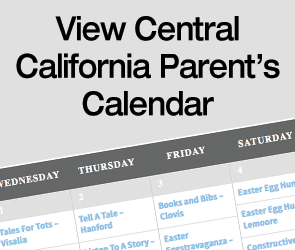Make Your Home an Ideal Learning Environment

by Jan Pierce
You are your child’s first teacher and your home is your child’s first school. You spend a good bit of time every day setting the tone for behaviors, encouraging first steps, and pouncing on those teachable moments to mold your children into the happy and successful people you want them to be.
But, are you missing some opportunities to support your child’s learning? Kids will thrive in a home that makes learning a priority and creates the proper balance between direct teaching and “give it a go on your own” kinds of involvement. Every child needs a different blend of the two—some children need direct instruction before they’re willing to try something new, and others are rarin’ to go without a lot of introduction.
Here are some guidelines for making your home a comfortable place to work, play, and learn—a place where efforts are valued over a finished product and where it’s just fine to try and fail along the road to success.
Model a Lifestyle of Learning
My father was an avid fisherman and fishing was a family sport. We often hit the water before the sun was up and fished (and ate) all day long. I learned early on that fishing equipment was next to sacred and that I could impress my Dad with my fishing skills.
It’s like that with any sort of learning. If your kids know you think reading, or playing music, or playing chess at a high level is cool, they’ll think so too. It isn’t the subject matter that’s important, it’s the fact that children will believe learning new things is important, if you show that you believe it is.
So read some books, do some home improvement projects, learn to grow flowers, or learn a new language. Your kids will notice both the effort and the expertise, but more importantly, they’ll know that you value learning.
Provide Materials
Children need to do hands-on exploration as they learn. They enjoy molding clay and they love cutting and pasting. When outdoors, they enjoy gathering materials and building forts. Parents don’t need to join in the creativity, but they can help the process by providing materials. Make it a habit to have a good supply of paper, pencils, markers, glue, and all the other stuff of artistic endeavors. Allow kids to use simple tools (with appropriate safety precautions) and marvel at their creations.
You might keep a supply of old clothing and props for the dramatic sessions that will take place after reading a particularly good story. Encourage kids to act out their favorite fairy tales, or encourage them to write a book about their latest interest. Use their love for heroes to encourage creative extensions such as giving a play, writing a poem or singing a new song.
Expect a bit of a mess along the way. Creative processes are worth a few spills and piles of rubble.
Follow Their Lead
Right now my youngest grandson is enamored with dinosaurs and volcanoes. He talks about them, knows dinosaur names, understands that volcanoes erupt, and learned that one of the theories about dino demise was a large volcanic eruption back in the day. So, when he came for a visit I made sure to have dino and volcano books ready to read and enjoy.
He spent a lot of time creating caves out of playdough for plastic dinosaur figures and re-enacting dinosaur adventures. We read the volcano books and learned to identify the cutaway parts of a volcano.
What are your children excited about right now? Do they love to plant seeds and watch them grow? Do they want to learn how to speak Spanish or how to cook a pizza? It pays to notice the things your kids are interested in and support their learning in those specific areas.
Find Programs, Classes and Other Local Learning Challenges
Signing the kids up for classes in dance, music or sports can be expensive and time-consuming. Most parents do it anyway. But don’t overlook the free activities available through school or church projects, local youth programs and your local library. Let them try a variety of activities and then if they take off in drama or music, the cost of classes is well worth the price.
Be Their Cheerleader
Whatever your child enjoys doing, it is your privilege to be their cheerleader. If they love art, then make their next birthday gift an array of art materials. If they love to write, provide the paper and pencils or a keyboard. If they love to play chess, learn a few moves and play along. It’s easy to root on the sidelines of a soccer game, but might require a bit of inspiration to cheer on a quieter child who enjoys reading biographies or studying insects. Find a way. It matters.
Remember, you’ll always be your child’s number one teacher. Make the most of that role and create an environment in which learning is as natural as breathing.
Tips from Central California Parents!
“Have patience and take breaks! This is easier said than done, but this is all new and we’re all learning. Your child will test you and you should look at it as an opportunity for teaching. If your patience is running thin or you notice your child may benefit from a brain break, take one! Go for a quick walk, dance with your kids, or just take a mental break. You need the break as much as they do. Plan them throughout your day to save everyone’s sanity.” —Angela A. (Clovis)
“Use this time as an opportunity to cater to your child’s specific needs. If your child needs more help with Language Arts, schedule more time reading and writing each day.” —Carrie B. (Madera)
“Clear your expectations and be flexible. Your house may not look like a classroom, you may not read books to them like their teachers, and your kids may not behave as well as normal. Don’t let these things get you down. This is a time to be flexible. We are all doing the best that we can!” —Fran S. (Fresno)
“Stick to a routine or schedule and set boundaries. Have your routine or schedule posted so your kids know what is expected of them. It’s also a good idea to set your own routine or schedule to keep yourself on track. Set clear boundaries for your kids so you can also get your own work done. You can set physical boundaries if you want to keep them out of your home office or time boundaries if you need a block of uninterrupted time.” —Andrew O. (Visalia)
“Have a behavioral and rewards system in place. I use mason jars with the coins from their Connect game. Red chips are given when they show behaviors I don’t want and yellow are for good behaviors I want to see continue. I use this system to have them earn free time on technology. I also have daily and weekly prizes. We have a small treasure box, but it doesn’t have to be toys and candy, there are lots of things that are free you can use as incentives.” —Angela A. (Clovis)
“If you’re feeling overwhelmed, ask for help! If you’re struggling with your child’s homework, look into hiring an online tutor. Many businesses here in the Valley are still offering remote services. If you’re struggling with your own work, talk with your boss to see what type of support is available to you.” —Sara L. (Fresno)
Central California Parent is the #1 FREE parenting resource for Central Valley families.
Stay connected with Central California Parent throughout the month!
• Like Us on Facebook
• Follow Us on Instagram
• Follow Us on Pinterest
• Follow Us on Twitter
• Subscribe For our Family E-Newsletter
• Read Our Digital Edition
• Enter for our FREE Giveaways








